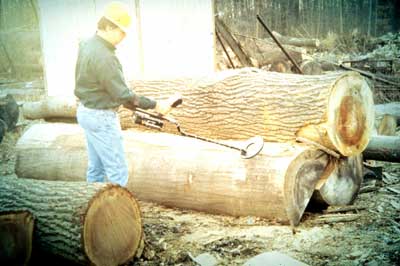Question
I have two questions. First I am interested in the repeated occurrence of cottonwood in this forum. To my knowledge there are very few uses for cottonwood. It is hard to work or finish, dries into a pretzel, is structurally weak, has a short service life and is visually bland. That said, what am I missing? I have been fascinated by the utility of clear poplar for finish carpentry. Is it the same material? Does it hold up over time? Is it a substitute for other lumber?
Secondly, how do I tell if the blade on a bandsaw mill is dulling? Of course I want a razor sharp blade for every cut, but I want to do something besides change blades every ten minutes. Where do others draw the line?
Forum Responses
(Sawing and Drying Forum)
From contributor D:
I have found several markets for cottonwood. One is for pallet rack decking. Its light coloring helps with lighting. It is strong enough to hold up. The other is for horse stalls and arenas. It makes good light weight planks for loading lawn mowers. Cottonwood is pretty versatile wood. As far as blade sharpness, I listen for motor load and look for blade deflection. If you see waves in your wood you should have changed blades one cut before.
